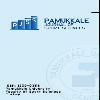Reviewing Perceived Exercise Benefits and Barriers among Sports Employees
AbstractThe purpose of this study was to examine perceived exercise benefits and barriers in sports employees. A total of 200 sports employees who were working as physical training and sports teachers at private and public schools under the Ministry of National Education, trainers and sports training experts working at the youth services and sports directorate in Antalya Province voluntarily participated in the study. The Exercise Benefits/Barriers Scale developed by Sechrist, Walker and Pender (1987), Turkish validation and reliability tests of which were performed by Ortabağ (2009), was employed to determine the exercise benefits and barriers levels of the participants. Frequency analysis, significance test (t test) of the difference between two averages and ANOVA test were used to assess the data. As a result; it was found that there were significant differences between perceived exercise benefits and barriers and variables of marital status, adequate nutrition, exercising. It was identified that the single employees had higher level of perceived exercise benefits and barriers than the married employees. There was also a significant difference between perceived exercise benefits and adequate nutrition. On the other hand; there was not a significant difference between perceived exercise barriers and adequate nutrition. There was also a significant discrepancy between perceived exercise benefits and exercising. However; no significant difference was found between perceived exercise benefits and barriers and variables of age and sex. Also; average perceived exercise barriers were higher among female employees than male employees.
Keywords:
sports employees,
___
- References Ansari, W.E., Lovell, G. (2009). Barriers to Exercise in Younger and Older Non- Exercising Adult Women: A Cross Sectional Study in London, International Journal of Environmental Research and Public Health, United Kingdom, 6(4), 1443-1455.
- Ardıç, F. ( 2014 ). Egzersizin Sağlık Yararları, Türk Fizyoterapi Tıp Rehabilitasyon Dergisi, 60 (2), 9-14. Ayaz S, Tezcan S, Akıncı F(2005). Hemşirelik yüksekokulu öğrencilerinin sağlığı geliştirme davranışları. Cumhuriyet Üniversitesi Hemşirelik Yüksek Okulu Dergisi, 9(2), 26-34.
- Batlas, Z., Can, G., Demircan, A., Enginaz, E., ve ark.(2008). Halk Sağlığı Ders Kitabı, İstanbul Üniversitesi Cerrahpaşa Tıp Fakültesi 40 Yılda 40 Kitap serisi, İstanbul Üniversitesi Basım ve Yayın Müdürlüğü, 502-505.
- Biddle, S. J. H. , Gorely, T., Stensel, D.J. (2004). Health-enhancing physical activity and sedentary behaviour in children and adolescents. J. Sports Sci. 22, 679-701.
- Doğan,R., Ayaz, S. (2015). Hemşirelerin Egzersiz Davranışları, Öz Yeterlilik Düzeyleri ve İlişkili Faktörler, Anadolu Hemşirelik ve Sağlık Bilimleri Dergisi,18, 4.
- Esposito E, Fitzpatrick J. (2011). Registered nurses’ beliefsof the benefits of exercise, their exercise behaviour and their patient teaching regarding exercise. International Journal of Nursing Practice, 17(4), 351-6.
- Gyurcsik, N.C., Spink, K.S., Bray, S.R., Chad, K. and Kwan, M. (2006) An ecologically based examination of barriers to physical activity in students from grade seven through first-year University. Journal of Adolescent Health 38, 704-711.
- İlhan, N., Batmaz, M., Akhan L. U. (2010). Üniversite Öğrencilerinin Sağlık Yaşam Biçimi Davranışları, Maltepe Üniversitesi, Hemşirelik Bilim ve Sanatı Dergisi 3(3), 34-44.
- Karadeniz, G., Uçum, E.Y., Dedeli, Ö., Karaağaç, Ö. (2008). Üniversite öğrencilerinin sağlıklı yaşam biçimi davranışları, TAF Prev Med Bull, 7(6), 497-502.
- Lee, I. M., Shiroma, E. J., Lobelo, F., Puska, P., Blair, S. N., Katzmarzyk, P. T. (2012). Effect of physical inactivity on majör non-communicable diseases worldwide: an analysis of burden of disease and life expectancy. Lancet, 380, 219-29
- Lovell, G.P., El Ansari, W., Parker J.K. (2010). International Journal of Environmental research and public health; Mar, 15-73, 784-798.
- Maurer, F., Smith, C. (2000). Community Health Nursing Theory and Practice, WB Sounders Company. Mavric, F., Kahrovic, I., Muric, B., Radenkovic, O.(2014). The Effects of Regular Physical Exercise on the Human Body. Physical Culture, 68(1), 29-38.
- Ortabağ, T., Ceylan, S., Akyüz, A., Bebiş, H. (2009). Validity and Reliability of the Exercise Benefits /Barriers Scale (EBBS) for Female University Students in Turkey, 12. st World Congress on Public Health, ( April 27 - May 1), İstanbul.
- Öz, F. (2004). Sağlık Alanında Temel Kavramlar, İmaj İç ve Dış Ticaret A.Ş.11-35.
- Pender, N.J., Murdaugh, C.L., Parsons, M.A. (2006). Physical Activity and Health Promotion, Health Promotion in Nursing Practice, Upper Saddle River, New Jersey 07458.
- Sabuncu, N., Babadağ, K., Taşocak, G., Atabek, T. (1993). Hemşirelik Esasları, Eskişehir, 24 33. Sechrist, K.R., Walker, S.N., Pender, N.J. (1987). Development and Psychometric Evaluation of the Exercise Benefits /Barriers Scale, Research in Nursing & Health, 10, 357-365.
- Queensland Health. The Health of Queenslanders: Prevention of Chronic Disease 2008. Second Report of the Chief Health Officer Queensland; Queensland Health: Brisbane, Australia, 2008.
- Tabak, R.S.(2000). Sağlık Davranışı ile İlgili Modeller, Sağlık Eğitimi, Somgur Yayıncılık, Ankara, 1-2.
- Thompson, W., Gordon, N., Pescatello, L.S.(2009). ACSM’s Guidelines for Exercise Testing and Prescription. 8th ed. Baltimore, MD: Lippincott Williams& Wilkins, 253-5.
- Yalçınkaya, M., Özer, F.G., Karamanoğlu, A.Y. (2007). Sağlık çalışanlarında sağlıklı yaşam biçimi davranışlarının değerlendirilmesi. TSK Koruyucu Hekimlik Bülteni, 6 (6), 409-420.
- World Health Organization. Healthenhancing physical activity (HEPA) policy audit tool (PAT). Version 2. Geneva: WHO; 2015. [updated 2015 November 11; cited 2016 January 4]. Available from: http://www.euro.who.int/__data/assets/pdf_file /0010/286795/Healthenhancing_physical_activ ityHEPApolicy_audit_toolPATVersion_2.pdf
- Yayın Aralığı: 3
- Yayıncı: Pamukkale Üniversitesi Spor Bilimleri Fakültesi
